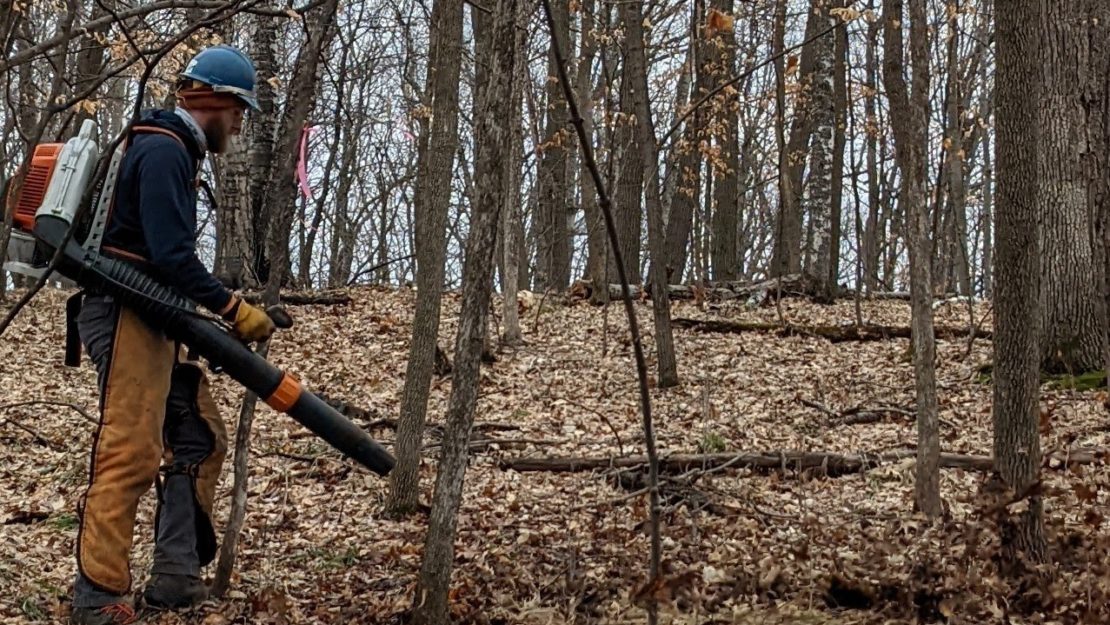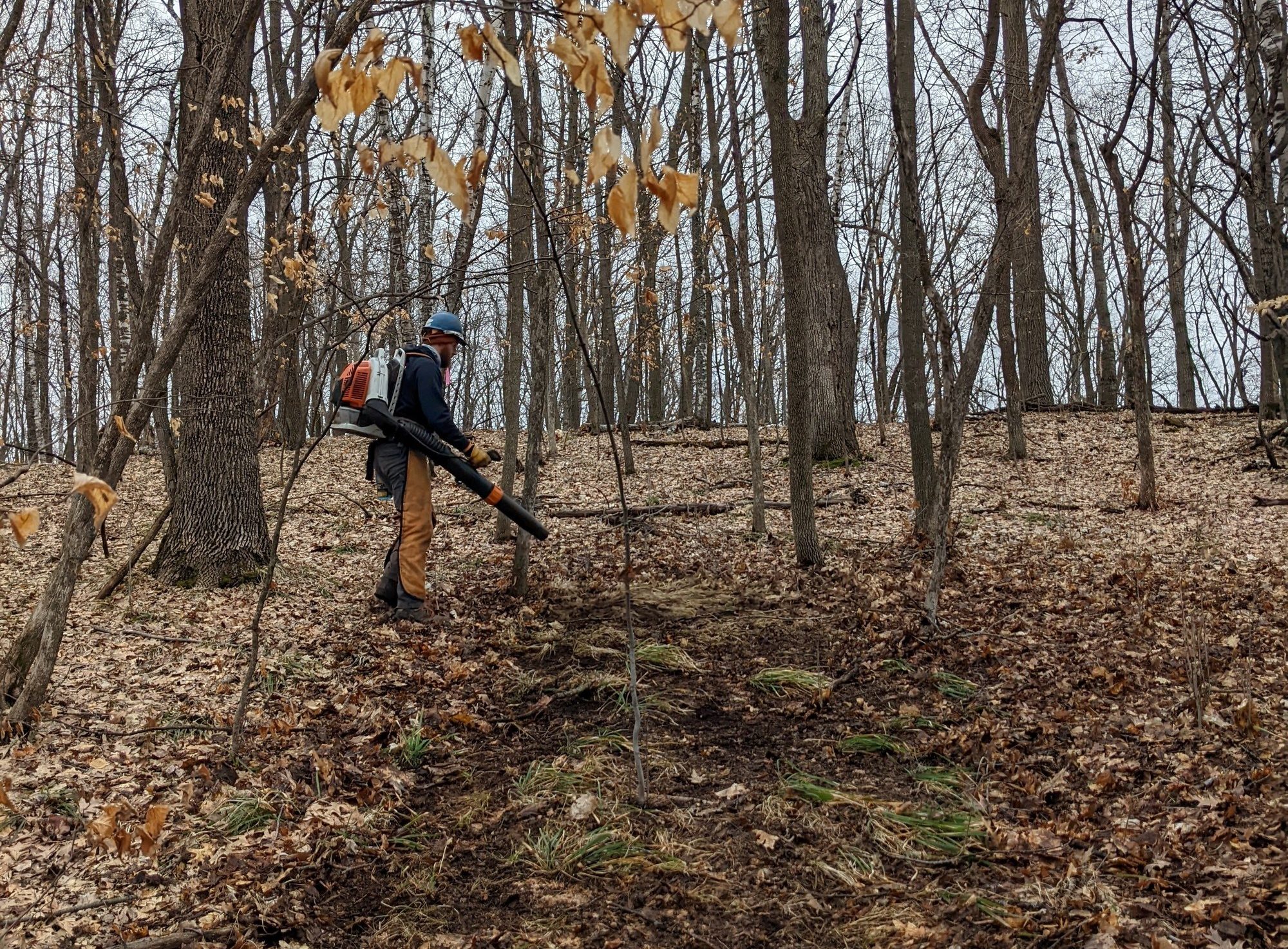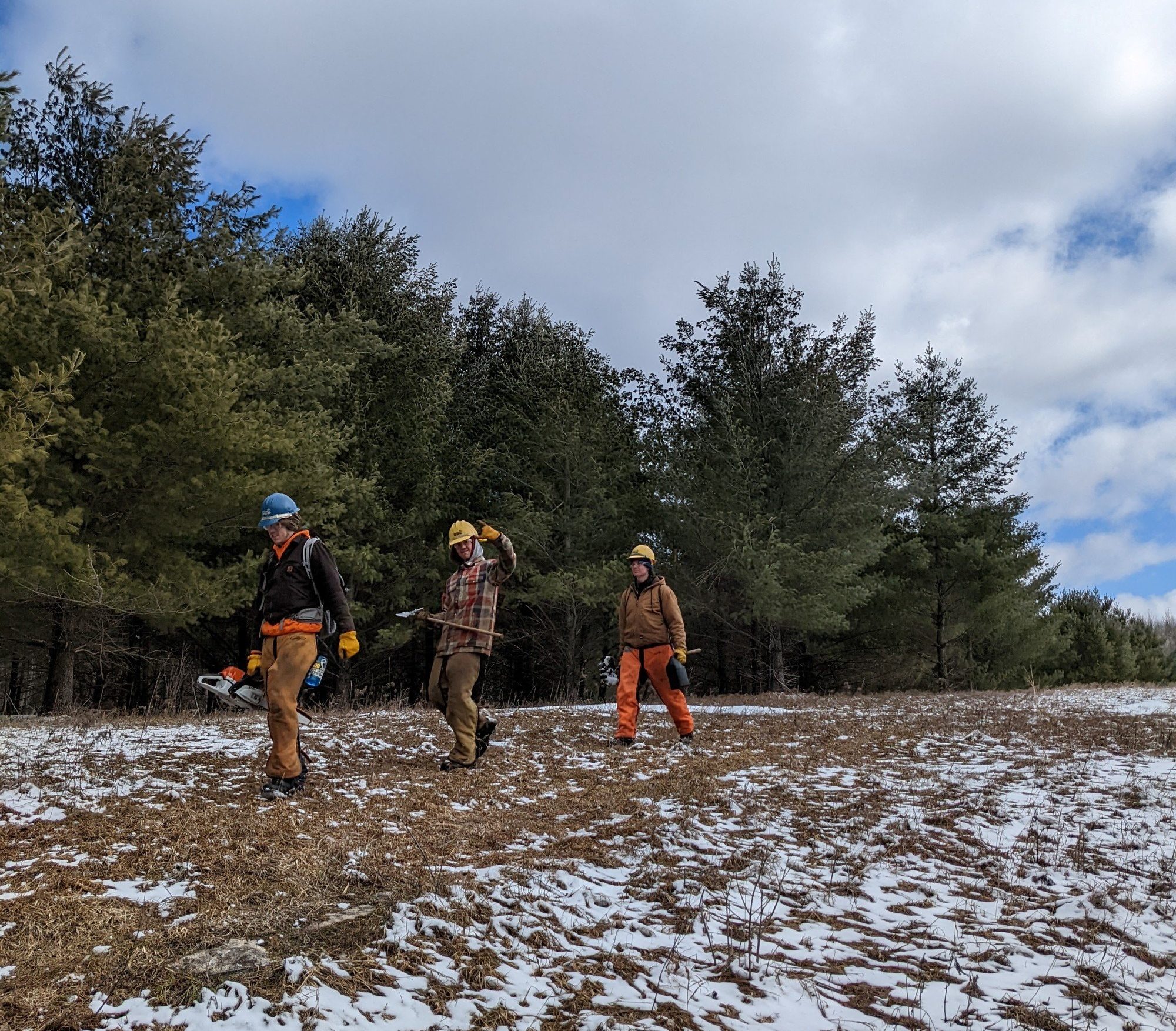Tis the Season to be Burning

By Cyrus Bird-Walker, Brainerd Field Crew Leader / AmeriCorps Member
Spring is among us. Good weather brings fire, so we must prepare our natural spaces for it. With the Corps, I have been learning more and more the importance of prescribed burns. They scar the land but bring renewal of growth afterwards. Native plants grow to become fire tolerant and invasive species go down with the flames. A cycle of growth, as practiced by those who originated these lands.
Brainerd and Bemidji started the second week of April working with the folks down at Whitewater WMA. Chris and I had the chance to work with the South District staff and crew leaders before heading down there. We got to experience both a bluff burn and a small prairie burn to dip our toes in the world of Rx (Prescribed burning). The bluff didn’t burn entirely, but we ensured it would not be jumping beyond our flanks. With the prairie burn, we each got to drive the mules, circling it multiple times to establish a well covered wet line.
With our second day, we got to meet the staff at Whitewater as well as work with the South District again. This site involved digging a handline in a forested setting, but with a hefty – but powerful – leaf blower. 185 acres later, we had completed another successful burn and just before a thunderstorm could roll in. I will admit all the smoke from watching the fire line had me in tears.

With nasty weather the rest of the week, we had the opportunity to haul scrap metal! While loading the metal into trailers, we found two bikes. With each switch of a trailer for loading, I would ride the bike back and forth at the WMA shop. Gloomy weather afforded us more diversity in project work with cedar felling on a steep bluff. The goal was to restore it back to a prairie bluff full of grasses. I do like the smell of red cedar.

Week three of April found us working local with The Nature Conservancy 30 minutes southeast of Brainerd. We were tasked with prepping hand lines for the burn units of Hamson and Bass Lake in the Lake Alexander Preserve. Once again with Bemidji, we dug the gnarlier sections of line and clear brush from the previously used line established for side by sides. Hard work came out of this, with us hiking several miles each day of the week. Chainsaws for bucking and limbing logs and branches fallen haphazardly over the line. Snow prevented us from leaf blowing the first few days, but we had the opportunity the last day. Over hills and between trees were these lines constructed to ensure a defined burn unit.

With all that hard work, there is still more to do. We see ourselves back with The Nature Conservancy next week, either finishing where we left off or burning other units for regrowth. I think this past week has been good practice for the pack test, so we are ready for it.